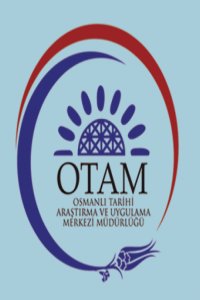1909 Matbuat Kanunu Matbuat Hürriyeti Getirdi Mi? İkinci Meşrutiyet Osmanlı Meclisi Mebusan'ında “Matbuat Hürriyeti” Tartışmaları 1909-1914
Basın, Basın Özgürlüğü, Gazete, Matbuat
Does The Prıntıng Law Of 1909 Brıng The Freedom To The Press? “Press Freedom” Dıscussıons In The Second Legıslatıve Ottoman Assembly 1909-1914
Press, Freedom of the Press, Newspaper,
___
- BEO, 3539-265418-0, 12.04.1327 (03.05.1909)
- BEO, 3543-265714-0, 16.04.1327 (07.05.1909)
- BEO, 3541-265538-0, 14.04.1327 (05.05.1909)
- BEO, 3541-265537-0, 14.04.1327 (05.05.1909).
- BEO, 3553-266440-0, 29.04.1327 (20.05.1909)
- BEO, 3956-296628-0, 8.11.1329 (31.10.1911)
- BEO, 3960-296944-0, 14.11.1329 (06.11.1911)
- BEO, 3973-297956-0, 14.11.1329 (06.11.1911)
- BEO, 3973-297956-0, 17.12.1329 (09.12.1911)
- BEO, 4095-307081-0, 25.10.1330 (07.10.1912)
- BEO, 4177-313247-0, 22.06.1331 (29.05.1913)
- BEO, 4198-314777-0, 17.08.1331(22.07.1913)
- DH.HMŞ., 26-49-0, 27.12.1331 (27.11.1913)
- DH.MKT., 2897-62-0, 24.07.1327 (11.08.1909)
- DH.MKT., 2817-44-0, 26.04.1327 (17.05.1909)
- DH.SYS., 55-77-0, 04.01.1330 (25.12.1911)
- DH.ŞFR., 413-27-0, 03.03.1325 (16.05.1909)
- İ. DUİT., 99-3-0, 11.07.1327 (29.07.1909)
- MV., 158-5-0, 07.11.1329 (30.10.1911)
- ŞD., 32-31-0, 09.12.1329 (01.12.1911)
- ŞD., 28-70-0, 19.07.1328 (27.07.1910)
- ŞD., 39-15-0, 27.10.1331(29.09.1913)
- ŞD., 39-24-0, 22.12.1331(22.12.1913)
- Devre: I, Cilt: 2, İçtima Senesi: 1, İnikat: 47, 14 Mart 1325.
- Devre: I, Cilt: 3, İçtima Senesi: 1, İnikat: 65, 20 Nisan 1325.
- Devre: I, Cilt: 3, İçtima Senesi: 1, İnikat: 69, 28 Nisan 1325.
- Devre: I, Cilt: 1, İçtima Senesi: 3, İnikat: 11, 22 Teşrinisani 1326.
- Devre: I, Cilt: 1, İçtima Senesi: 3, İnikat: 12, 24 Teşrinisani 1326.
- Devre: I, Cilt: 1, İçtima Senesi: 3, İnikat: 19, 15 Kânunuevvel 1326.
- Devre: 2, Cilt: 1, İçtima Senesi:1, İnikat: 16, 6 Haziran 1328.
- Devre: 3, Cilt: 1, İçtima Senesi:1, İnikat: 17, 5 Haziran 1330.
- Düstur, Tertib-i Sani, Cilt 1, 24 Cemaziyelahir 1326- 27 Şevval 1327 (10 Temmuz 1324- 29 Teşrinievvel 1325), Matbaa-i Osmaniye, Dersaadet 1329.
- BERKES, Niyazi, Türkiye’de Çağdaşlama, Doğu Batı Yayınları, İstanbul 1978.
- İNUĞUR, M. Nuri, Basın Yayın Tarihi, Der Yayınları, İstanbul 2005.
- İSKİT, Server, Hususi İlk Türkçe Gazetemiz Tercüman-ı Ahval ve Agâh Egendi, Ulus Basımevi, Ankara 1937.
- İSKİT, Server, Türkiye’de Matbuat İdareleri ve Politikaları, Başvekâlet Basın ve Yayın Umum Müdürlüğü Yayınları, İstanbul 1943.
- JELTYAKOV, A.D., Türkiye’nin Sosyo-Politik ve Kültürel Hayatında Basın (1729-1908), Basın Yayın Genel Müdürlüğü, Ankara 1979.
- KARAGÖZ KIZILCA, Gül, “Osmanlı/Türk Basın Tarihi Yazımı Üzerine Eleştirel Bir Değerlendirme”, İlef Dergisi, 3/1 (2016), s.71-90.
- KOCABAŞOĞLU, Uygur, “Hürriyet”i Beklerken, İkinci Meşrutiyet Basını, İstanbul Bilgi Üniversitesi Yayınları, İstanbul 2010.
- KOLOĞLU, Orhan, Osmanlı Dönemi Basının İçeriği, İstanbul Üniversitesi İletişim Fakültesi Yayınları, İstanbul 2010.
- KOLOĞLU, Orhan, Osmanlı’dan Günümüze Türkiye’de Basın, İletişim Yayınları, İstanbul 1992.
- ŞAPOLYO, Enver Behnan, Türk Gazeteciliği Tarihi, Her Yönüyle Basın, Güven Matbaası, Ankara 1969.
- TOPUZ, Hıfzı, II. Mahmut’tan Holdinglere Türk Basın Tarihi, Remzi Kitabevi, İstanbul 2003.
- TUNAYA, Tarık Zafer, Türkiye’de Siyasal Partiler- İkinci Meşrutiyet Dönemi 1908-1918, C.1,
- ULUSOY NALCIOĞLU, Belkıs, “Tanzimat Döneminde Türk Gazeteciliği ve Türk Basınının İlkleri”, Manas Üniversitesi Sosyal Bilimler Dergisi, 7/14 (2005), s.253-267.
- YAZICI, Nesimi, Takvim-i Vekayi “Belgeler”, Gazi Üniversitesi Basın Yayın Yüksekokulu Basımevi, Ankara 1983.
- ISSN: 1019-469X
- Yayın Aralığı: Yılda 2 Sayı
- Başlangıç: 1990
- Yayıncı: Ankara Üniversitesi
Osmanlı İmparatorluğu’nda Çingenelerin Sosyo-Ekonomik Yapıları
Osmanlı Ve Safevî Elçilerinin Venedik'te Kabul Törenleri Karşılaştırmalı Perspektifte
Trabzon Şer‘iyye Sicillerindeki Nikah Kayıtları 1750-1755
İskan Sürecinde Konar-Göçerler: Manisa Ve Çevresi Örneği Xvi-Xx. Yüzyillar
Rumeli Demiryolu Projesi İmtiyazları ve Yabancı Sermaye, 1860-1936
Birinci Dünya Savaşı'na Kadar Osmanlı Devleti'nde Demiryolu Politikaları ve İnşaatları
Zeynel ÖZLÜ, Mustafa Murat ÇAY
Feniks Neşriyat-I Matbua Osmanlı Anonim Şirketi’nin Nizamnamesi ve Faaliyetleri
